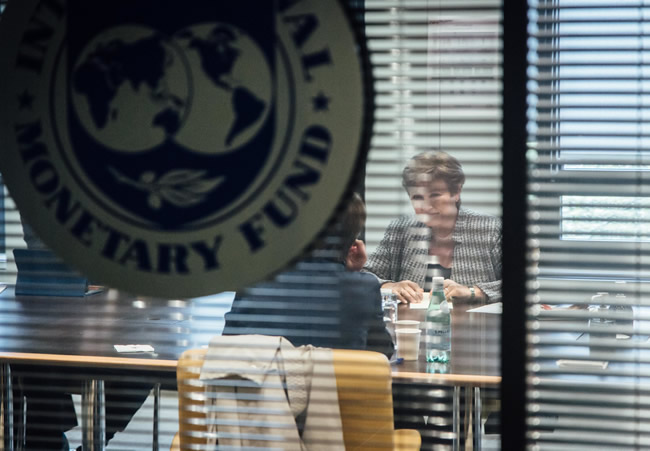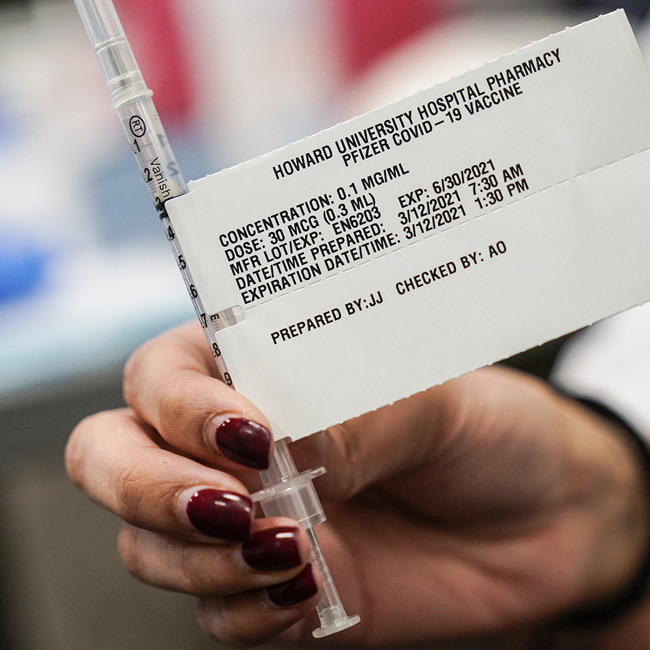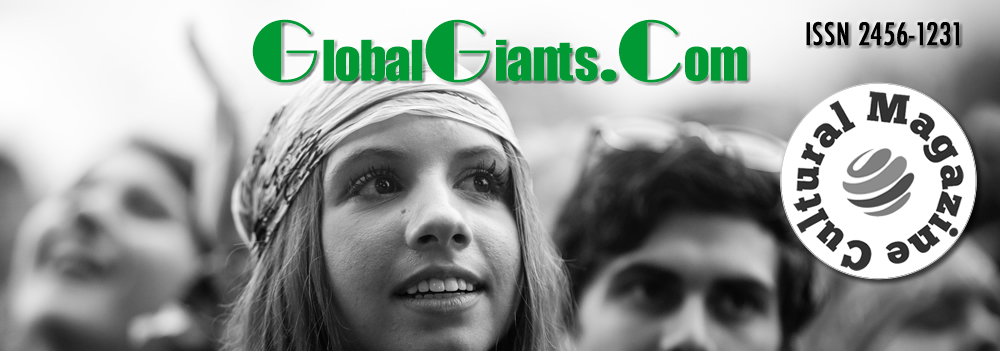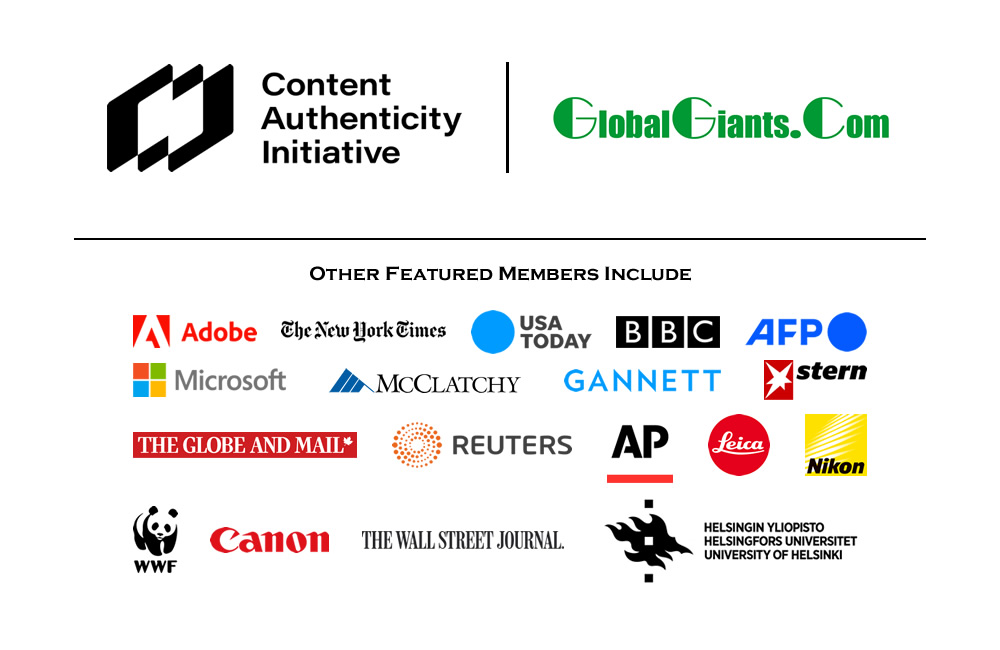« Chandigarh University introduces Industry-driven Futuristic Programs in Emerging Fields of Blockchain Technology, Electric Vehicles, Digital Marketing, and Data Sciences for the Academic Session 2021-22. | Main | India's Union Cabinet approves the Memorandum of Understandings (MoUs) by the Institute of Cost Accountants of India (ICAl) with Foreign Professional Accountancy Bodies/Organisations. »
June 2, 2021
New US$50 Billion Health, Trade, and Finance Roadmap to End the Pandemic and Secure a Global Recovery
Heads of International Monetary Fund (IMF), World Bank Group (WB), World Health Organization (WHO), and World Trade Organization (WTO) issue extraordinary calls for financing actions by government leaders to accelerate an end to the COVID-19 pandemic.
IMF, WB, WHO, and WTO chiefs call for US$50 billion investment to generate US$9 trillion in global economic returns by 2025 and boost manufacturing capacity, supply, trade flows, and the equitable distribution of diagnostics, oxygen, treatments, medical supplies, and vaccines.
The call to action by this quadrilateral grouping comes at a dangerous point in the pandemic. As the historic World Health Assembly concludes, G7 meetings commence and follow the G20 Global Health Summit.
Doses need to be donated immediately to developing countries, synchronized with national vaccine deployment plans, including through COVAX, co-led by CEPI, Gavi, and WHO, alongside key delivery partner UNICEF.

Photo: International Monetary Fund Managing Director Kristalina Georgieva meets with Odile Renaud-Basso, President of the European Bank for Reconstruction and Development (EBRD), at the IMF Paris Office. May 17, 2021. Paris, France. IMF Photo/Cyril Marcilhacy.

Photo: A doctor holds a syringe containing the Pfizer COVID-19 vaccine at Howard University Hospital. March 12, 2021. Washington, DC, United States. IMF Photo/Joshua Roberts.
Geneva/Washington, DC, June 1, 2021 — The heads of the world’s predominant global financing, health and trade agencies have united in urging government leaders to urgently finance a new US$50 billion roadmap to accelerate the equitable distribution of health tools. It would help end the pandemic that has devastated lives and livelihoods for 18 months. It would also set the foundations for a genuinely global recovery, as well as enhanced health security.
The leaders of the International Monetary Fund, World Bank Group, World Health Organization, and World Trade Organization [Kristalina Georgieva, Tedros Adhanom Ghebreyesus, David Malpass, and Ngozi Okonjo-Iweala] have issued a joint statement. They say the governments must act without further delay or risk continued waves and explosive outbreaks of COVID-19 and more transmissible and deadly virus variants undermining the global recovery.
Leaders of the four agencies said: “By now, it has become abundantly clear there will be no broad-based recovery without an end to the health crisis. Access to vaccination is key to both.”
The joint statement draws on a recent IMF staff analysis, which stated that US$50 billion in new investment is needed to increase manufacturing capacity, supply, trade flows, and delivery, which would accelerate the equitable distribution of diagnostics, oxygen, treatments, medical supplies, and vaccines. This injection would also give a significant boost to economic growth around the world.
“At an estimated US$50 billion, it will bring the pandemic to an end faster in the developing world, reduce infections and loss of lives, accelerate the economic recovery, and generate some US$9 trillion in additional global output by 2025, “said the leaders.
It echoes economic analysis by the International Chamber of Commerce and the Eurasia Group - both of which make a case for a relatively modest investment by governments compared to the trillions spent on national stimulus plans and lost trillions in foregone economic output. But the critical element of this is that it effectively spurs global vaccination and bridges the equity gap.
“Increasing our ambition and vaccinating more people faster: WHO and its COVAX partners have set a goal of vaccinating approximately 30% of the population in all countries by the end of 2021,” said the four leaders. “But this can reach even 40% through other agreements and surge investment, and at least 60 percent by the first half of 2022.”
The leaders have urged the governments to act on the investment opportunity to boost vaccines, oxygen, tests, and treatment supplies. The IMF, WBG, WHO, and WTO chiefs issued their joint statement as the World Health Assembly drew to a conclusion.
“To urgently get more shots in arms, doses need to be donated immediately to developing countries synchronized with national vaccine deployment plans, including through COVAX,” said the four leaders. “Cooperation on trade is also needed to ensure free cross-border flows and increasing supplies of raw materials and finished vaccines.”
The IMF, WBG, WHO, and WTO leaders would address a joint press conference later today to outline the new joint roadmap to ending the pandemic and driving the genuinely global and fast recovery.
Sources: IMF, WHO, WB, WTO
|GlobalGiants.Com|

Photo: International Monetary Fund Managing Director Kristalina Georgieva walks back to IMF HQ following her interview with the BBC’s Katty Kay. April 7, 2021. Washington, DC, United States. IMF Photo/Cory Hancock.
• Following is the Joint Statement by Kristalina Georgieva, Tedros Adhanom Ghebreyesus, David Malpass, and Ngozi Okonjo-Iweala:
• A NEW COMMITMENT FOR VACCINE EQUITY AND DEFEATING THE PANDEMIC •
As preparations are made for the G7 Summit in the United Kingdom of Great Britain and Northern Ireland next week, the top of the agenda is how to end the COVID-19 pandemic and secure the global recovery. Urgent challenges face us.
By now, it has become abundantly clear there will be no broad-based recovery without an end to the health crisis. Access to vaccination is key to both.
There has been impressive progress on the vaccination front. Scientists have come up with multiple vaccines in record time. Unprecedented public and private financing have supported vaccine research, development, and manufacturing scale-up. But a dangerous gap between richer and poorer nations persists.
Even as some affluent countries are already discussing the rollout of booster shots to their populations, the vast majority of people in developing countries — even front-line health workers — have still not received their first shot. The worst served are low-income nations which have received less than one percent of vaccines administered so far.
Increasingly, a two-track pandemic is developing, with richer countries having access and poorer ones left behind.
Inequitable vaccine distribution is not only leaving untold millions of people vulnerable to the virus. It is also allowing deadly variants to emerge and rebound back across the world. As variants continue to spread, even countries with advanced vaccination programs reimpose stricter public health measures, and some have implemented travel restrictions. In turn, the ongoing pandemic is leading to deepening divergence in economic fortunes, with negative consequences for all.
It need not be this way. That is why we are calling today for a new level of international support for - and implementation of - a stepped-up coordinated strategy, backed by new financing, to vaccinate the world.
A recent proposal from the International Monetary Fund (IMF) staff put forward a plan with clear targets, practical actions, and a feasible cost. It builds on and supports the ongoing work of WHO, its partners in the Access to COVID-19 Tools (ACT) Accelerator initiative and its global vaccine access program COVAX and the result of the World Bank Group, the World Trade Organization (WTO), and many others.
At an estimated $50 billion, it will bring the pandemic to an end faster in the developing world, reduce infections and loss of lives, accelerate the economic recovery, and generate some $9 trillion in additional global output by 2025. It is a win for all — while around 60 percent of the gains will go to emerging markets and developing economies, the remaining 40 percent will benefit the developed world. And this is without taking into account the invaluable benefits on people’s health and lives.
• What does it entail?
First. Increasing our ambition and vaccinating more people faster: WHO and its COVAX partners have set a goal of vaccinating approximately 30% of the population in all countries by the end of 2021. But this can reach even 40% through other agreements and surge investment, and at least 60 percent by the first half of 2022.
To do so requires additional financing for low- and middle-income countries, with a very significant proportion in the form of grants and concessional funding. To urgently get more shots in arms, we must immediately donate doses to developing countries synchronized with national vaccine deployment plans, including through COVAX. Cooperation on trade is also needed to ensure free cross-border flows and increase raw materials and finished vaccines.
Second. Insurance against downside risks such as new variants that may necessitate booster shots. It means investing in additional vaccine production capacity by at least one billion doses, diversifying production to regions with little current power, sharing technology and know-how, scaling up genomic and supply-chain surveillance, and contingency plans to handle virus mutations or supply shocks.
We must remove all blockages to expanding supply, and we call on WTO members to accelerate negotiations towards a pragmatic solution around intellectual property. Several low- and middle-income countries are also making moves to invest in their local manufacturing capacity, which is crucial to end this pandemic and prepare for the next one.
Third. Immediate boosting of testing and tracing, oxygen supplies, therapeutic and public health measures, ramping up vaccine deployment, and the ACT-Accelerator initiative. WHO, UNICEF, the World Bank, and Gavi have been conducting vaccine readiness assessments in over 140 developing countries and providing on-the-ground support and financing to prepare for vaccine rollout.
• What about the cost?
Of the US$ 50 billion, there is a strong case for grants of at least US$ 35 billion. G20 governments have sent positive signals, recognizing the importance of providing about US$ 22 billion in additional funding for 2021 to the ACT-Accelerator.
Additional financing of about US$ 13 billion is needed to boost vaccine supply in 2022 and further scale up testing, therapeutics, and surveillance. The remainder of the overall financing plan — around US$15 billion — could come from national governments supported by multilateral development banks, including the World Bank’s US$12 billion financial facilities for vaccination.
For the plan to work, there are two additional requirements: speed and coordination.
It calls for upfront financing, upfront vaccine donations, and upfront precautionary investments and planning - rather than commitments that may be slow to materialize. All of this must be made available as soon as possible.
It also requires coordinated global action, grounded in complete transparency in the procurement and delivery process. The strategy’s success depends on all parties—public, private, international financial institutions, foundations — moving in tandem.
Investing US$ 50 billion to end the pandemic is potentially the best use of public money we will see in our lifetimes. It will pay a colossal development dividend and boost growth and well-being globally. But the window of opportunity is closing fast — the longer we wait, the costlier it becomes, in the human suffering and economic losses.
Today, on behalf of our four organizations, we announce a new commitment to work together to scale up needed financing, boost manufacturing, and ensure the smooth flow of vaccines and raw materials across borders. It would dramatically increase vaccine access to support the health response and economic recovery and bring needed hope.
Our institutions are stepping up to turn this hope into reality:
The IMF is preparing an unprecedented Special Drawing Rights (SDR) allocation to boost the reserves and liquidity of its members. WHO is seeking to identify financing so that the urgent needs of its Strategic Preparedness and Response Plan and the ACT-Accelerator partnership can be met, with COVID-19 Technology Access Pool (C-TAP) incentivizing the sharing of know-how and technology. The World Bank will have vaccine projects up and running in at least 50 countries by mid-year—with the International Finance Corporation working to mobilize the private sector to boost vaccine supply for developing countries. And the WTO is working on freeing up supply chains for the plan to succeed.
Ending the pandemic is a solvable problem that requires global action—now.
Let’s all pull together and get the job done.
— Kristalina Georgieva is the Managing Director of the International Monetary Fund (IMF); Tedros Adhanom Ghebreyesus is the Director-General of the World Health Organization (WHO); David Malpass is the President of the World Bank Group; Ngozi Okonjo-Iweala is the Director-General of the World Trade Organization (WTO).







Edited & Posted by the Editor | 1:41 AM | Link to this Post







